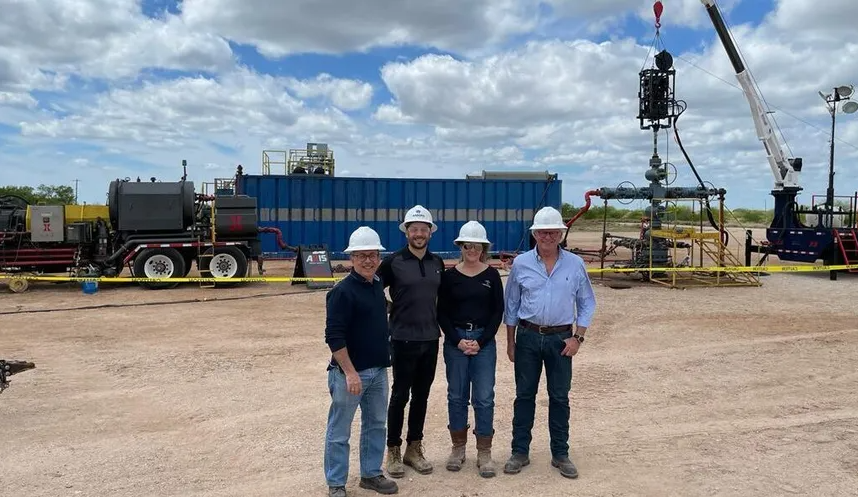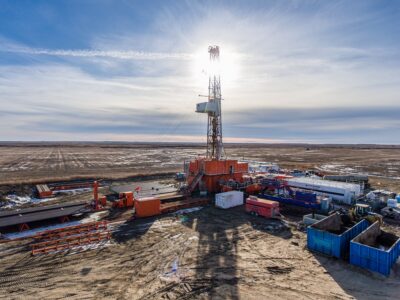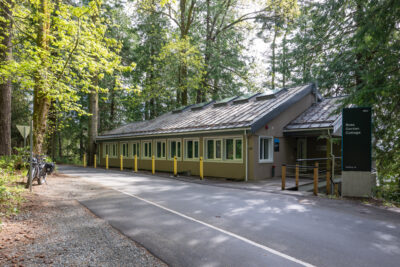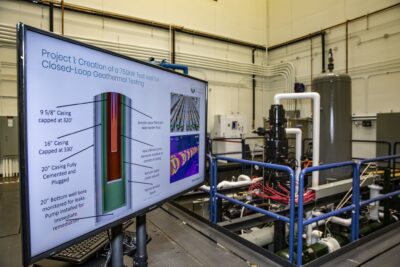Sage reports successful results of underground energy storage pilot
Sage Geosystems Inc. has demonstrated the reliability and cost-efficiency of EarthStore™, the company's underground energy storage system.
Sage Geosystems Inc. (Sage), a geothermal baseload and energy storage company, has announced the results and data from their full-scale commercial pilot of EarthStore™ – the company’s energy storage system that can provide short- or long-duration storage. Further, the results show Sage’s technology is cost-competitive with lithium-ion batteries, pumped storage hydropower, and natural gas peaker plants.
Sage will present their energy storage pilot results tomorrow at the PIVOT 2023 conference.
Summary of Sage’s Commercial Pilot Results
EarthStore™ is Sage’s mechanical energy storage technology that harvests the pressure energy of the fluid and is also enhanced by the heat from the formation.
- Produced 200kW for over 18 hours (long-duration) and 1MW for 30 minutes (load-following), limited only by the small diameter rental surface equipment piping.
- Generated electricity with Pelton turbines to power equipment on location.
- Measured subsurface system efficiencies between 88-94%, with an estimated round-trip efficiency (RTE) of 70-75%.
- The heat from the formation expands the downhole fluid and improves RTE.
- Measured fluid losses < 2%, decreasing to 1% by the end of the 5-week period.
- Demonstrated the ability in a single well to generate 2-3MW net output.
- Calculated LCOS that is cost-competitive to pumped storage hydropower and lithium-ion batteries.
“We have cracked the code to provide the perfect complement to renewable energy, yielding reliable alternative baseload in a manner that is cost competitive with lithium-ion batteries and natural gas peaker plants,” said Cindy Taff, CEO of Sage Geosystems. “The opportunities for our energy storage to provide power are significant – from remote mining operations to data centers to solving energy poverty in remote locations. We can interconnect with power grids or develop island/microgrids with a cleaner energy solution that is proven and ready to scale.”
Landmark Results
Short- and Long-Duration Storage. The field results from 2022/2023 and extensive data analysis performed in 2023 confirmed Sage can provide 18 hours or more of storage capacity to effectively generate baseload energy 24/7 when paired with solar or wind generation. The field results also demonstrated that Sage can alternatively provide high-powered, short-duration power (load-following) during peak demand. Both storage intervals, long- and short-duration, enhance grid reliability with stable power output. In addition, the heat from the formation expands the fluid downhole and improves round trip efficiency (RTE).
The Sage data sets were obtained by pumping in and flowing back water from their well to gauge capacity and power duration. No induced seismicity was measured either during fracturing or subsequent pumping operations.
Sage’s energy storage design is ready to scale and is not geographically limited. In addition, it can be used in newly drilled wells and in existing oil and gas wells. The flexibility of their storage for both short- and long-durations can provide optimally timed flows to move energy from a time of day (or week or longer) where the demand is low to another time when the demand is high.
Cost Competitive LCOS (Levelized Cost of Storage). Of even more significance, the results showed, based on LCOS, that Sage’s energy storage can provide power at a cost that is lower than lithium-ion battery storage and traditional pumped storage hydro. It also is competitive with natural gas peaker plants, providing a cleaner option for providing ancillary services, black start services, and/or redistributing curtailed energy during peak demand periods.
Energy Transition in Action – Energy Storage to Geothermal
Sage’s Enhanced Geothermal Systems (EGS) geothermal well design utilizes all the same technologies as their energy storage system, which was proven earlier this year. Their unique EGS well design equates to half the cost of EGS two-well systems, and their supercritical CO2 turbine can provide more power output over traditional turbines currently used in geothermal. Mostly importantly, not only is Sage harvesting the heat from the downhole fluid, but they are also harvesting the pressure resulting in a significant increase in overall system efficiency.
Source: Sage Geosystems via PR Newswire


















